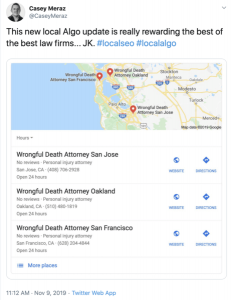There is a near unlimited supply of social data available to marketers today. Consumers take to Twitter, Facebook, Instagram and more to express their innermost desires, their likes and dislikes, their every thought – in real time.
Given this massive amount of data, marketers should have an easy time understanding their customer, right? Not necessarily.
According to a recent survey, 53 percent of B2B marketers say that generating actionable insights from their social data is one of the biggest marketing challenges they face.
Here are some common pitfalls that marketers run into when exploring how social data can improve their marketing, and how you can avoid them.
Targeting the wrong customers
Social data can tell you what people are thinking… but you have to be listening to the right people to make it worth collecting.
If you are listening to an audience segment that has little to no interest in your product, the data you gather about them won’t be very valuable.
Many marketers get so caught up in the fact that they can collect data that they fail to point their data-gathering in the right direction. So how can you avoid falling into this trap? Make sure you know who your target audience is before you spend huge amounts of time and resources gathering data. Build a buyer persona by conducting customer interviews, using the knowledge from your sales team, and tapping into social data (but don’t fall victim to tunnel-vision!). From there you can continue to use social data to refine your target audience.
Posting irrelevant content
Social data can tell you all about the type of content your audience likes to engage with, and it can guide what you create yourself.
However, many marketers forget that social data is real time, and that what was popular when they gathered the data two weeks ago might no longer be a viable topic. Or, they get bogged down trying to sift through the spam and identify the gems.
To leverage social data as part of your content strategy, be sure to work in real time and iteratively. This means that while you gather the data, use it – don’t sit on it waiting for it to get stale. Start creating content right away. And sometimes, you’ll find that your content flops, even though you believe it was informed by the best data out there. If that happens, learn to fail fast, and use what you learned to create even better content the next time around.
Wrong time of day
Another problem with social data can be how marketers use it to time their content. It’s all well and good to say that since the last 10 posts published at noon on Fridays got lots of engagement, the next post published at this time will do equally well – but sometimes it doesn’t.
When using social data to time tweets, posts and articles, be sure that you are looking at data from the right audience (your own audience), and that you are testing, re-testing, and checking the stats on each and every piece of content you create. If you assume that noon on Fridays is a great time to post, but you fail to check your engagements for a few weeks, you might notice that your audience has drifted away.
What this all boils down to: Extracting meaning
Ultimately, each of these problems is the result of being unable to extract meaning – the right meaning – from social data.
Marketers struggle with determining how to apply what they know about their audience to their marketing strategy. This requires continual data collecting, application, insights and actions in order to be successful.
Digital & Social Articles on Business 2 Community(20)






